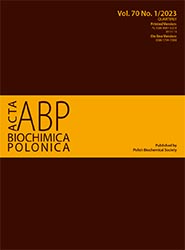Circular RNA LPAR3 targets JPT1 via microRNA-513b-5p to facilitate glycolytic activation but repress prostate cancer radiosensitivity
Abstract
A great many circular RNAs (circRNAs) are considered key modulators of human malignancies. However, the function of circRNA lysophosphatidic acid receptor 3 (LPAR3) in the radioresistance of prostate cancer (PCa) cells is still uncertain. circLPAR3, microRNA (miR)-329-3p, and JPT1 expression in PCa tissues and cells were detected by real-time quantitative PCR or western blot. Cell proliferation was detected by CCK-8 (cell proliferation assay) and colony formation assay, apoptosis was by flow cytometry, and migration and invasion ability were by Transwell assay. Cell glycolysis was analyzed by glucose uptake, lactate production, and ATP metabolism. Under different doses of radiation, the radiosensitivity of PCa cells was detected by colony formation assay. The relationship between circLPAR3, miR-513b-5p, and JPT1 was confirmed by dual luciferase reporter gene detection and RIP assay. The data presented that circLPAR3 and JPT1 expression was elevated in PCa, while miR-513b-5p expression was reduced. Repression of circLPAR3 depressed cell advancement, and restrained glycolysis, but enhanced the radiosensitivity of PCa cells. CircLPAR3’s target miRNA was miR-513b-5p which targeted JPT1. Elevated JPT1 reversed the repressive effects of circLPAR3 knockdown or miR-513b-5p overexpression on PCa advancement, glycolysis, and radiosensitivity. In summary, the knockdown of circLPAR3 reduces glycolysis, but promotes PCa radiosensitivity via the miR-513b-5p/JPT1 axis, discovering a novel mechanism in PCa progression.
Acta Biochimica Polonica is an OpenAccess quarterly and publishes four issues a year. All contents are distributed under the Creative Commons Attribution-ShareAlike 4.0 International (CC BY 4.0) license. Everybody may use the content following terms: Attribution — You must give appropriate credit, provide a link to the license, and indicate if changes were made. You may do so in any reasonable manner, but not in any way that suggests the licensor endorses you or your use.
Copyright for all published papers © stays with the authors.
Copyright for the journal: © Polish Biochemical Society.


